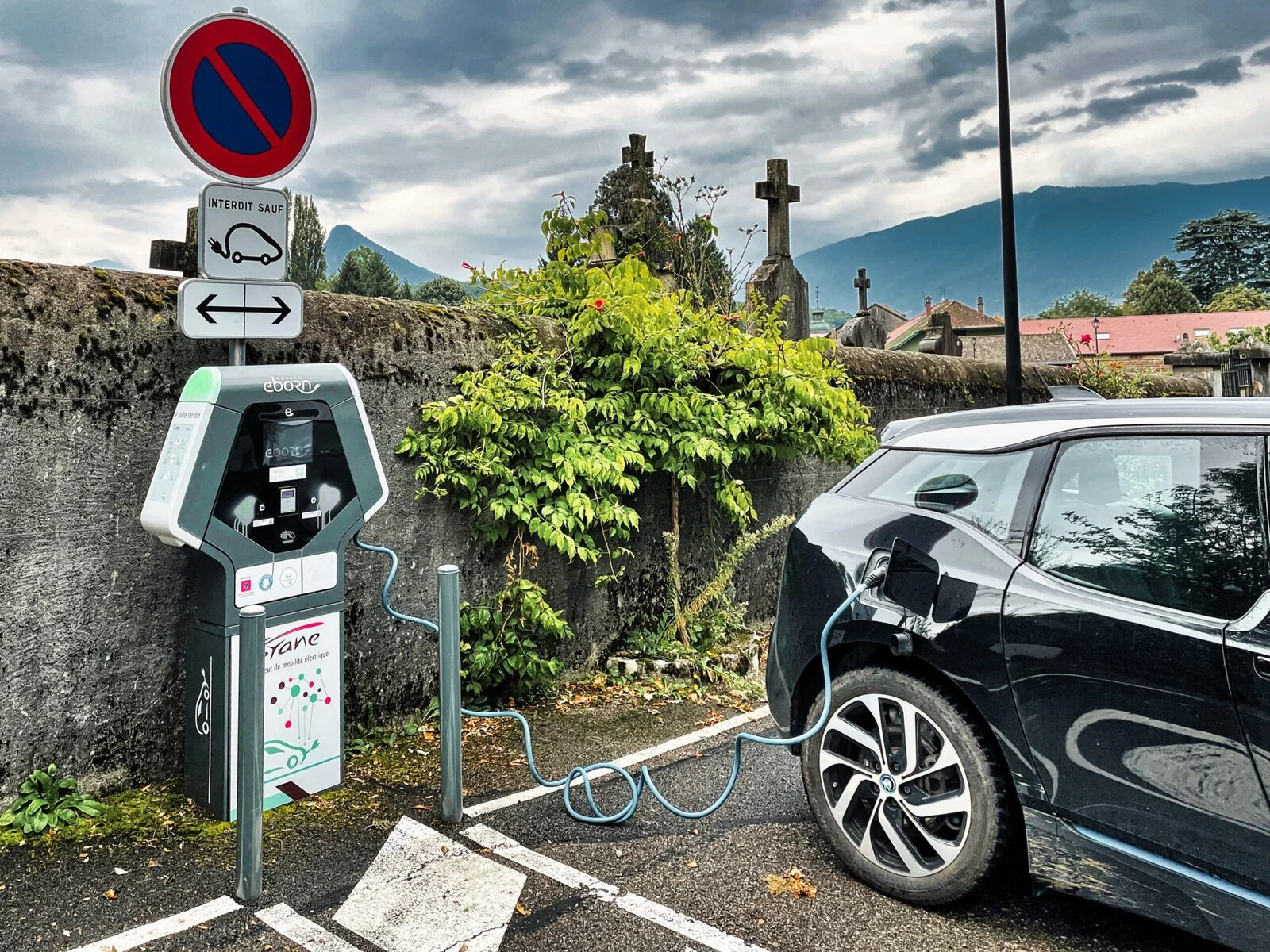This is part one of No Matter Who Wins, a three-part series about positive changes that will likely continue regardless of the outcome of the 2024 US election. Read part two here, and read part three here.
Radically innovative geothermal plants in Nevada and Utah. A big bet on nuclear power from the world’s biggest companies. A 50 percent increase in electric car sales in Europe, a fully renewable month in the Canary Islands, a green energy park in Singapore visible from space. A breakneck rollout for the Inflation Reduction Act, a continued decoupling between global economic growth and emissions growth, a carbon-neutral Olympic Games. Amid high tides of anxiety on a warming planet, there is plenty of good news in the world of environmentalism.
There is no doubt that the 2024 US election will have massive consequences for the future of climate and environmentalism in the US and beyond. But much of the good news is bound to continue regardless of the election outcome: Economic and political forces beyond the White House, both within the US and around the world, are aligning on the goal of sustaining a livable planet.

The United States’ total emissions have been falling for nearly two decades, the result of both the growth in renewables and the substitution of coal for relatively cleaner natural gas production. This market momentum will not cease come November 5, according to Josh Freed, senior vice president for the climate and energy program at Third Way, a non-partisan think tank. “If you look at Texas, for example, Texas is far outpacing California in building solar right now, because it’s just a lot easier to permit solar in Texas than it is in California,” says Freed. This year, despite the Golden State’s large head start, Texas became the state in the Union with the most installed solar capacity. “It shows that even a very, very conservative political state recognizes the benefit. That’s great,” says Freed.
The growing cross-partisan appeal doesn’t stop there. Of the 51 green manufacturing projects sponsored by the Inflation Reduction Act totaling one billion or more, 43 are in Republican congressional districts, bringing green jobs in battery, electric vehicle and solar manufacturing. With electric vehicles continuing to take the auto market by storm, these manufacturing jobs are keys both to economic and environmental prosperity. Across the United States, green investment hit a record $247 billion in 2023, and 2024 is set to break that record, with investment in the first half of 2024 climbing another 32 percent. Altogether, that marks a 286 percent increase over the last half-decade. “The goal, in part, of the Inflation Reduction Act and Bipartisan Infrastructure Law was to have red communities, working class folks see themselves as winners, see themselves as part of the solution,” says Freed. “We need to make this whole space, the whole conversation, much less ideological and much more just a tangible, everyday component of people’s lives.”

Across the globe, a green revolution is increasingly part of everyday life. Worldwide, 85 percent of all new power capacity built in 2023 was renewable. Countries around the globe added 425 gigawatts of new solar capacity alone — nearly double the amount added in 2022 and more than 10 times that of a decade ago — with China accounting for more than 60 percent of the total. In Sub-Saharan Africa, where roughly half of the population lacks reliable access to electricity, renewable capacity is expected to more than triple by the end of this decade. For this region, green transition is a path to prosperity, not just sustainability. “A just and sustainable transition … promoting accelerated, inclusive, and sustainable growth, as well as diversification and green industrialization will help Africa reach its potential,” writes Claver Gatete, the executive secretary of the United Nations Economic Commission for Africa, in a recent report.
The electric vehicle revolution is driving change far beyond the US. In China, electric vehicle sales have exceeded expectations, climbing 32 percent year-over-year to nearly half of all vehicle sales in 2024 thus far (including hybrid vehicles). Some markets have taken the transition even further: In Norway, electric vehicles have accounted for almost all new vehicle registrations in 2024, with EVs now accounting for a majority of the vehicles on the road, largely thanks to strong government incentives for adoption.
Moreover, even as the world economy continues to grow, global emissions, the International Energy Association (IEA) reports, may have already peaked. The growth in installations of green energy has been driven by precipitous declines in the cost of green energy. Over the last decade, the price of wind power fell by 70 percent, and the prices of solar power and battery storage have fallen by more than 90 percent. In turn, the IEA reports, growth in renewables is increasingly the result of market forces rather than politics.
And regardless of the election outcome, the political commitment to mitigating climate change and protecting the environment worldwide will not disappear. Even if the White House were to recede from climate leadership, David Victor, a professor at the University of California San Diego’s School of Global Policy and Strategy, told S&P Global, “A lot of other folks are willing to step into the breach, and this time it will happen faster.”











